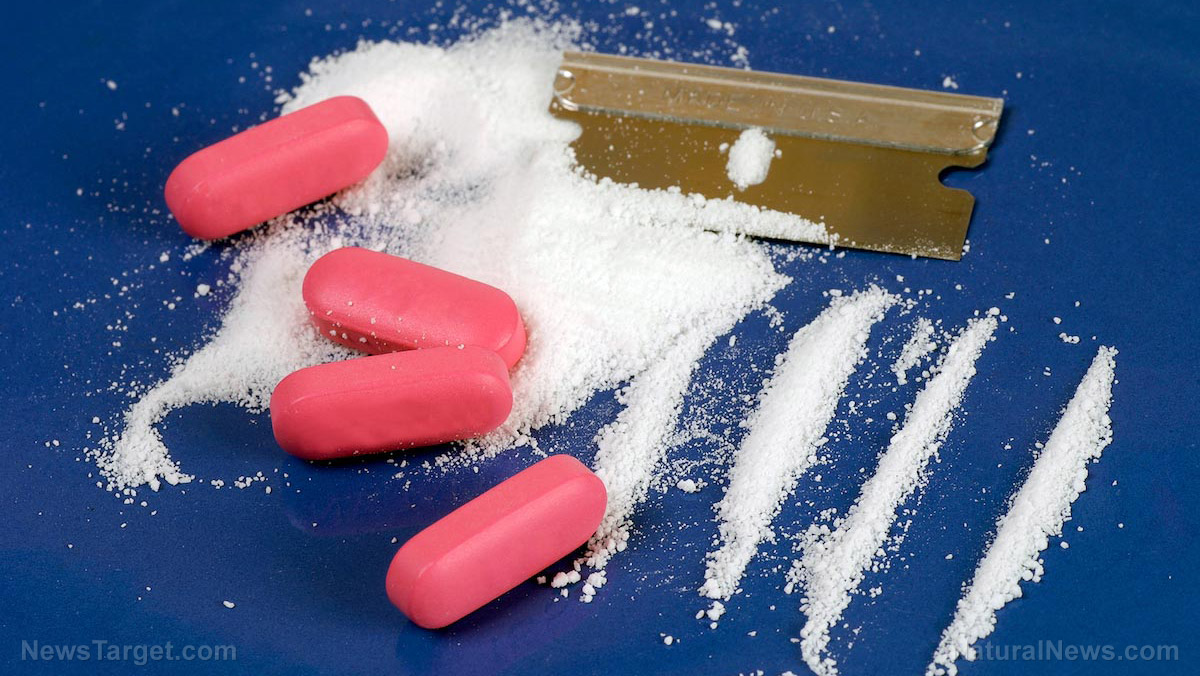UN report: Cocaine smuggling and production increase amid growing demand for illicit substances
07/02/2023 / By Laura Harris

A new report from the United Nations reveals that cocaine usage and production are at an all-time high.
This is according to the World Drug Report 2023, which found that the number of cocaine users in 2021, the most recent year for which data is available, reached 22 million, compared to 21 million the previous year. The report highlights the growing demand for illicit substances of cocaine.
Furthermore, the report notes that cultivation of coca bushes, from which the drug is produced, has soared from approximately 234,200 hectares in 2020 to an alarming 315,000 hectares in 2021.
“The world is currently experiencing a prolonged surge in both supply and demand for cocaine, which is now being felt across the globe and is likely to spur the development of new markets beyond the traditional confines,” stated the report.
Despite the high production, law enforcement agencies have seized significant quantities of cocaine. In 2021 alone, authorities confiscated 2,026 tons of the drug. As a result, the total amount of cocaine available to consumers remains slightly lower than levels observed in the mid-2000s. Nevertheless, the report underscores the steady increase in production since 2015.
While the Americas and Western and Central Europe continue to dominate the market, the report reveals that cocaine usage is rapidly expanding in Africa, Asia and Southeastern Europe. The global trade of drugs has evolved, with criminal actors diversifying their operations to create more efficient supply chains.
Drug traffickers becoming more innovative as demand increases
Traffickers are now using innovative smuggling techniques to transport cocaine base without detection. The cocaine base is dissolved into other materials, such as plastic and charcoal, making it more difficult for traditional screening methods to detect the contraband.

In Europe, traffickers have established “super labs” to extract the cocaine base from these concealed materials and convert it into powder. Gang chemists have developed techniques to effectively “lock” the cocaine into carrier materials. (Related: Cocaine and other illegal drugs are so common that 13% of us have traces of it on our fingers even if we don’t use it.)
Laurent Laniel, a principal scientific analyst at the European Monitoring Center for Drugs and Drug Addiction, previously reported that the chemicals used to bind the cocaine base with carrier products make it nearly impossible to retrieve the drug without specific knowledge of the precise unlocking process.
Similarly, Pieter “Posh Pete” Tritton, an early European pioneer of this trafficking method, noted that he mixed cocaine base with liquid rubber, “impregnating” it into the ground sheets of tents that were smuggled from South America to the United Kingdom. The cocaine was then extracted from the materials in a super lab in Britain.
Tritton and his associates used a latex solution impregnated with a cocaine base instead of cocaine hydrochloride. This method minimized losses during the extraction process and proved more cost-effective. With cocaine hydrochloride, the extraction process resulted in losing up to 30 percent of the drug and decreased potency. In contrast, using cocaine as a base reduced losses to around 10-15 percent and maintained its potency.
According to Tritton, this method offered advantages for traffickers. It increased the chances of successfully smuggling the drug without getting caught, making it extremely challenging for authorities to detect and prove the presence of cocaine. Since the drug was not in its final form, it created difficulties for law enforcement to identify and apprehend individuals knowingly carrying it.
Each trafficker customized their recipe for impregnating the cocaine into carrier materials, making it even more challenging for law enforcement to recover the drug. Tritton highlighted that this posed a significant challenge for the police and resulted in higher quality and lower-cost cocaine on the streets, benefiting end-users.
Learn more about the trafficking of illicit drugs at DrugCartels.news.
Watch this video of Bill Clinton’s sex slave recounting his cocaine smuggling scandal.
This video is from the Red Voice Media channel on Brighteon.com.
More related stories:
Coca-Cola operates secret COCAINE manufacturing facility in New Jersey.
Cocaine-producing giant Colombia seeking to DECRIMINALIZE the drug.
Cocaine, Spices, and Hormones Now Being Found in Drinking Water.
Sources include:
Submit a correction >>
Tagged Under:
addiction, cocaine, cocaine base, cocaine production, cocaine smuggling, cocaine trafficking, cocaine use, drug addiction, drug smuggling, drug trafficking, drug use, Europe, illegal drugs
This article may contain statements that reflect the opinion of the author
